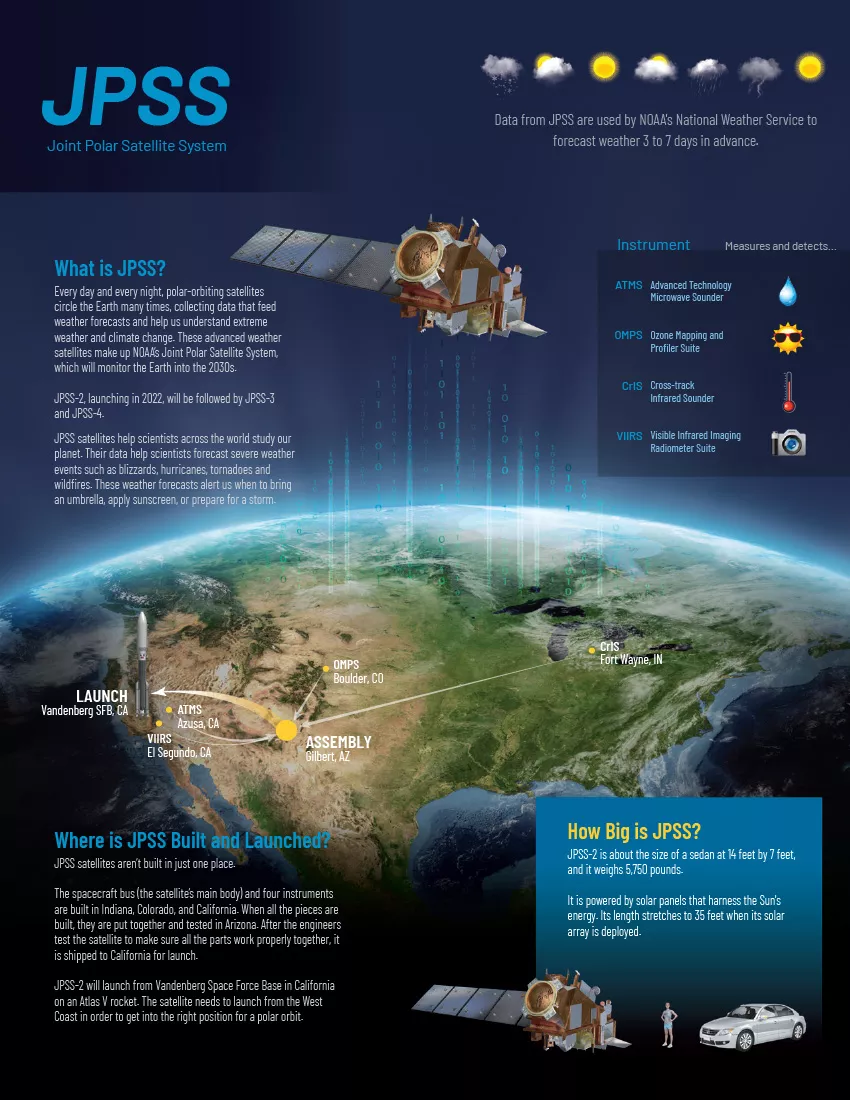
NOAA has completed a review of the many responses from two Broad Agency Announcements, or BAAs, seeking fresh ideas for new instrument technologies and concepts for future use on its next-generation geostationary, extended orbit, and polar-orbiting weather satellites.
To support global weather forecasting, NOAA is looking for new ways to augment observations in low-Earth orbit made by the Joint Polar Satellite System (JPSS). NOAA's previous generation of polar satellites and the Defense Meteorological Satellite Program still provide useful data, but are approaching the end of their operational service.
As it relates to the geostationary and extended orbits, NOAA is seeking new instrument and remote-sensing capabilities to continue environmental and space weather currently supported by GOES-R, Space Weather Follow-On, DSCOVR, and other solar observation satellites.
NOAA will begin to distribute directed Requests for Proposals (RFPs) to selected entities this week. RFP notifications will continue on a rolling basis for several weeks.
As the proposals are received and evaluated, NOAA will determine which companies will receive contracts to conduct short-term, focused studies intended to advance the agency's satellite architecture beyond GOES-R and JPSS. Those contract awards will be available at Sam.gov.
